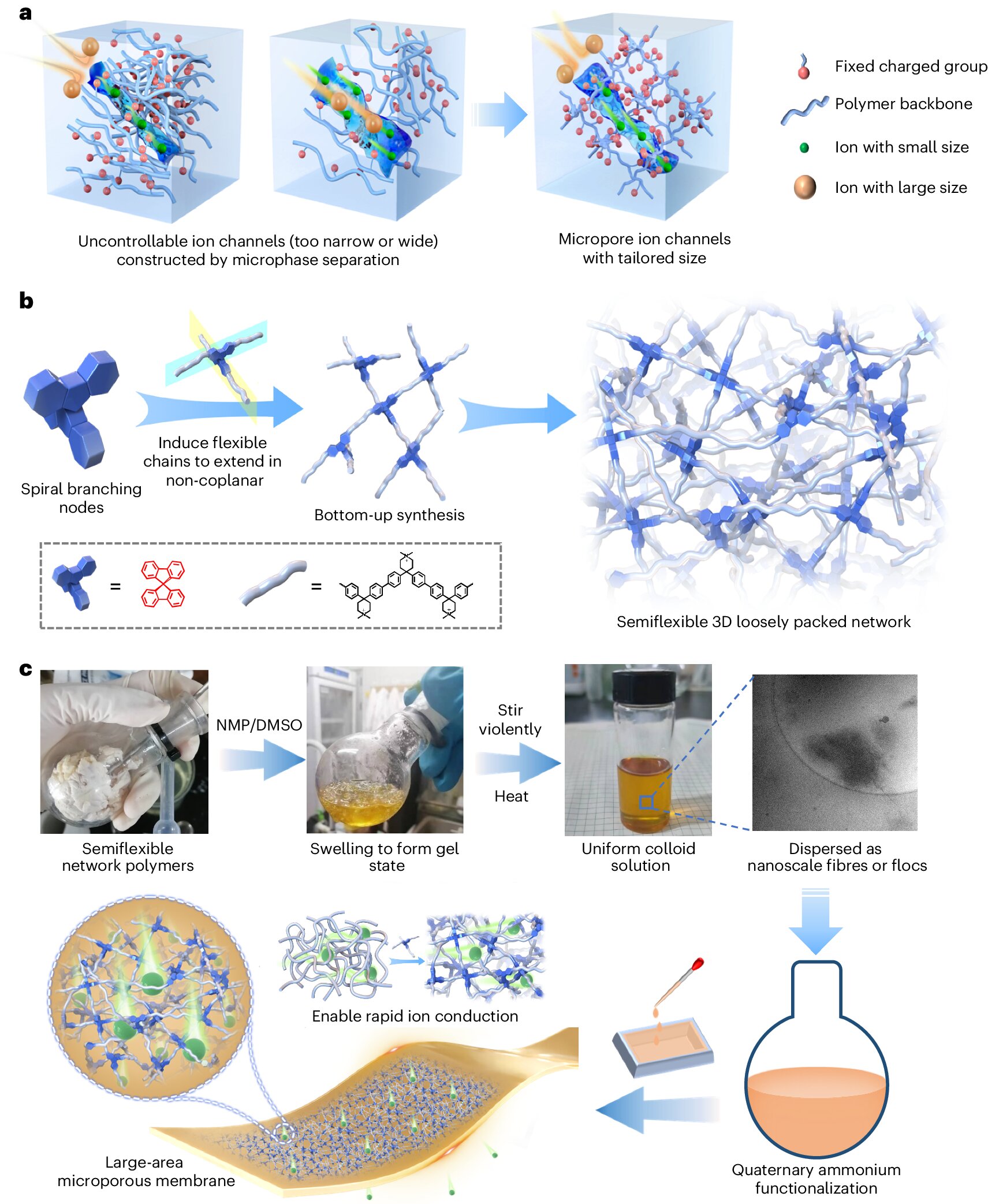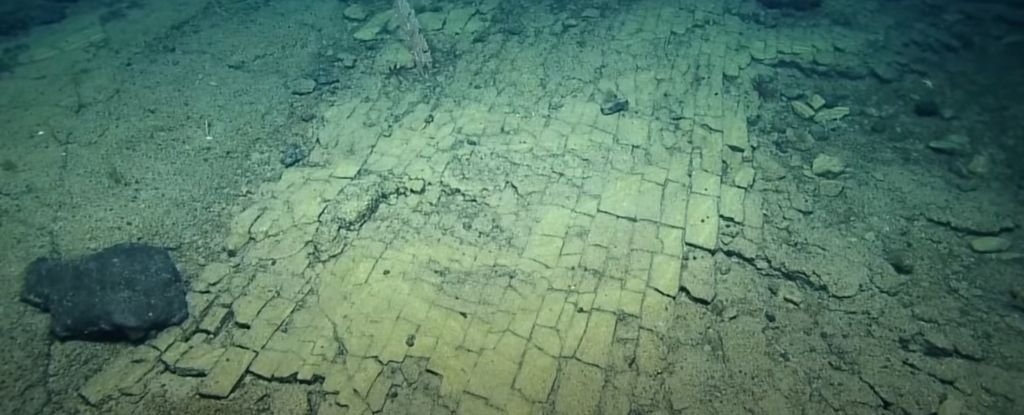A team of researchers has achieved a breakthrough in the development of anion exchange membranes (AEMs). They designed a novel spiro-branched polymeric membrane that incorporates highly connected sub-nanometer microporous ion channels, showing exceptional performance in flow battery applications. The team included researchers from the University of Science and Technology of China (USTC) of the Chinese Academy of Sciences (CAS), led by Prof. Xu Tongwen and Ge Xiaolin.
The study was published in Nature Sustainability.
AEMs have broad applications, including chemical separations, CO2 conversion, electrochemical ammonia synthesis, water electrolysis for hydrogen production, and various energy storage systems. The ability to efficiently and reliably conduct ions is vital for improving the performance and sustainability of these applications. Traditional methods, primarily through microphase separation, have struggled with balancing ion conductivity, selectivity, and stability. This often results in tradeoffs that limit the overall performance of the membranes.
To solve these problems, the research team developed a novel spiro-branched polymeric membrane using stereotwisted spiro scaffolds and poly (aryl piperidinium) based on an all-carbon backbone. The synthesis process involved creating a spiro-branched structure that combines the rigidity of spiro units with the flexibility of branched chains. This novel configuration was aimed at enhancing the free volume within the polymer, which is crucial for forming efficient ion transport pathways.
Furthermore, the researchers conducted comprehensive structural characterization, including morphology analysis using scanning electron microscopy (SEM) and transmission electron microscopy (TEM), as well as porosity measurements. These analyses revealed that the membrane forms a semi-flexible 3D loosely packed network, which significantly increases the free volume and creates highly connected sub-nanometer ion channels.
Finally, performance evaluation showed that the spiro-branched polymeric membranes demonstrated exceptional anion conductivity, with chloride ion conductivities exceeding 60 mS cm-1 at 30°C and reaching up to 120 mS cm-1 at 80°C. In addition, in flow battery applications, these membranes showed superior power density and energy efficiency, enabling rapid charge and discharge cycles at a high current density of 400 mA cm-2. They also exhibited excellent chemical stability in vanadium redox flow batteries, indicating their potential for long-term use in energy storage systems.
This breakthrough offers a new strategy for membrane material design, potentially addressing various energy and environmental challenges. The research not only advances the field of polymer science, but also paves the way for more efficient and sustainable energy storage technologies.
More information:
Huaqing Zhang et al, High-performance spiro-branched polymeric membranes for sustainability applications, Nature Sustainability (2024). DOI: 10.1038/s41893-024-01364-0
Provided by
University of Science and Technology of China
Citation:
Researchers develop high-performance anion exchange membranes for sustainability applications (2024, June 25)
retrieved 25 June 2024
from https://phys.org/news/2024-06-high-anion-exchange-membranes-sustainability.html
This document is subject to copyright. Apart from any fair dealing for the purpose of private study or research, no
part may be reproduced without the written permission. The content is provided for information purposes only.



















Discussion about this post